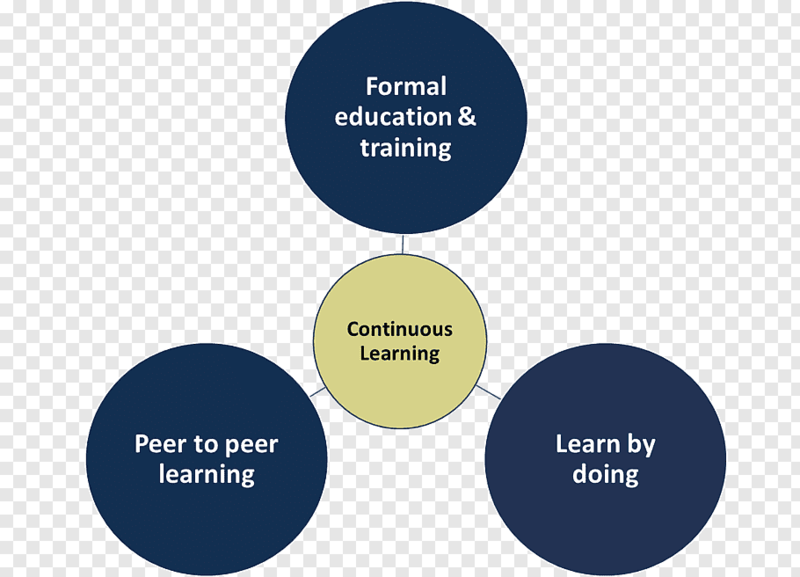e-Learning Ecologies MOOC’s Updates
Peer to peer learning
Collaborative Intelligence based on social learning is critical in learning dynamics. Our course facilitator, Mary Kalantzis, in ‘Collaborative Intelligence, Part 5B’, describes peer to peer learning as the platform where learners collaborate or work together to solve a given problem. Peer to peer learning can be defined as where students exchange their ideas, share knowledge, and participate in two-way learning activities (Fig. 1) [Kalantzis and Cope, 2015].
Researchers have recognized ten different patterns of peer learning [Boud, 2001] .
Traditional proctor method: Seniors mentor the junior students which is prevalent in many Universities. The advantage is that seniors know their subject and are generally more approachable. Juniors are less hesitant to approach them for even a small issue. Our institute has mentorship program for ‘Weak Learners’. In my opinion, it is an effective way and I have seen considerable improvement in learning through this mode of peer teaching.
Innovative learning cell: The same year students support each other in curricula and personal matters. This is used for both peer teaching and learning.
Peer-assessment schemes: In the current course which we have undertaken, we are actively engaged in peer-assessment.
Collaborative project: It is common in research where students or/ and faculty members collaborate on different aspects of a given project. As a researcher, I have collaborated with my colleagues and utilised their knowledge to complete and publish research projects. The development of RT-PCR, antigen and antibody-based tests for SARS-CoV-2, and the process of its vaccine development has been feasible due to collaborative work.
Private study groups: It is a common practice among students where they learn from each other.
The other models are discussion seminars, parrainage, projects in cascading groups, community work and workplace mentoring.
Fig. 1. Peer to peer learning: an important pillar of learning. Accessed from https://www.pngfuel.com/free-png/enpak
Peer to peer learning facilitates to develop important learning skills [Boud, 2001; Blog, 2020; Cope and Kalantzis, 2017].
Organization skills: Peer to peer learning helps to organize and plan learning activities.
Collaborative work: Recursive feedback and self-evaluation supports learning.
Higher standards of learning: The depth of knowledge, thoroughness and detailing is enhanced when learning is from different perspectives. Self-learning leaves gaps, but while explaining the concept, thoroughness comes and, in the process, aids to gain deeper knowledge.
Reinforces concepts: Peer learning can be an important addition in teaching and learning process which can enhance and enrich the quality of education.
Critical enquiry and reflection: Detailed interchange of information helps to introspect, reflect, and reassess the views.
Self and peer assessment: It provide an opportunity for formative assessment which helps to assess and apply the concept of sustainable assessment.
Increased comfort level: Students or employees can be more at ease with each other and the fear of being judged is not there. One can ask even trivial doubts without any hitch.
Improved communication skills: Students actively engaged in peer learning communicate better and improve productivity.
Community learning: Social learning creates a positive learning environment and develops commitment to each other. The ability to work with others is an important asset for job.
Lifelong learners: Peer learning makes people more responsible for their self-learning and in the process commit to lifelong learning.
The power of peer learning is generally under-estimated, and it is informal. There is a need to formalize peer learning so that its benefits are evenly distributed to every student in the class. Some of the challenges in un-organized peer-learning are enumerated.
Restrictive group: Students form a small group unless they are directed.
Limited access: Students might have limited access to peer group due to other commitments.
Favour friendship: Students generally interact with their friends.
Lack of social skills: Some do not have the necessary skills to interact with each other.
Part-time work: Students have less time due to part-time work.
Increased flexibility in course work: Students peer group varies with each class, consistency in peer group is lacking.
Competitive nature: In cutting-throat competitive world, some students could be hesitant to freely share their knowledge.
The experience of peer learning is very crucial not only in academic learning but also in group projects. Peer tutoring is organized whereas reciprocal peer learning within a class as a concept is underutilized. There is a need to formalize the peer learning and create an environment of collaborative learning for development of collaborative intelligence.
References
Boud, D. (2001). Making the move to peer learning. In Boud, D., Cohen, R. & Sampson, J. (Eds.) (2001). Peer Learning in Higher Education: Learning from and with each other. London: Kogan Page (now Routledge), 1-20.
(14) (PDF) Making the Move to Peer Learning. Available from: https://www.researchgate.net/publication/309967818_Making_the_Move_to_Peer_Learning [accessed Aug 01 2020].
Cope, B., and Kalantzis, M. (2017). Conceptualizing e-learning. In B. Cope and M. Kalantzis (Eds), e-Learning Ecologies. New York: Routledge.
Kalantzis, M., and Cope, B. (2015). Learning and new media. In D. Scott and E. Hargreaves (Eds.), The sage handbook of learning (pp. 373-387). Thousand Oaks CA: Sage.
Blog. March 18, (2020). The benefits of peer to peer learning. In Employee Engagement, HR Professionals, Performance Culture, https://sprigghr.com/blog/hr-professionals/the-benefits-of-peer-to-peer-learning/. Accessed August 01, 2020.


